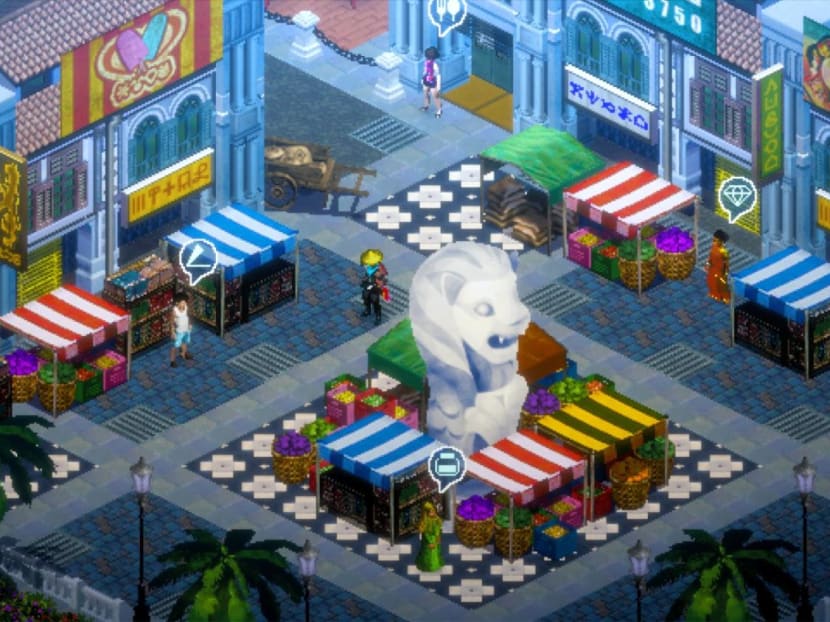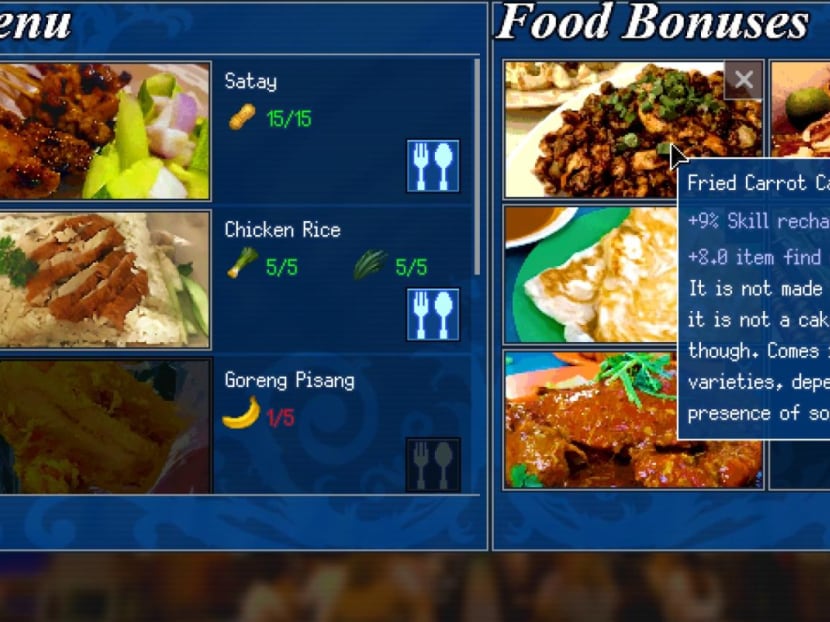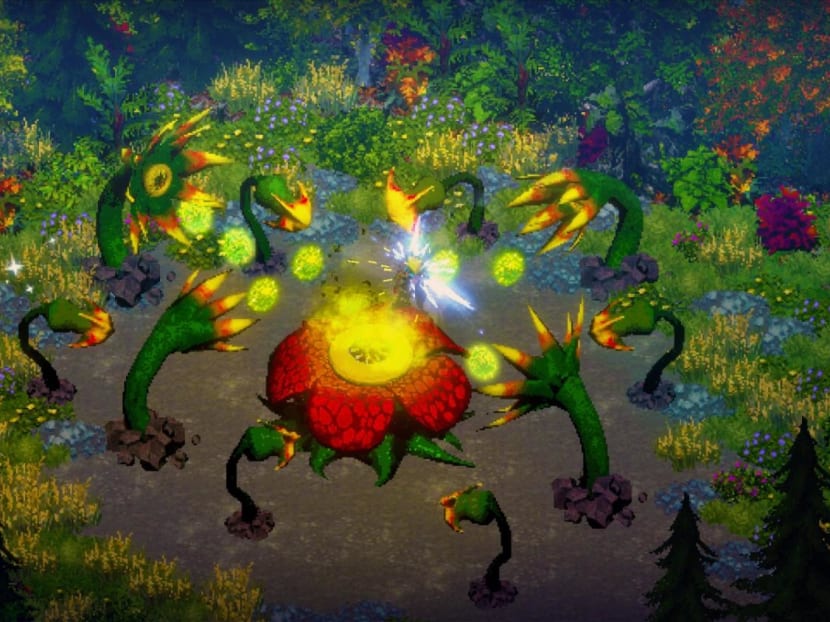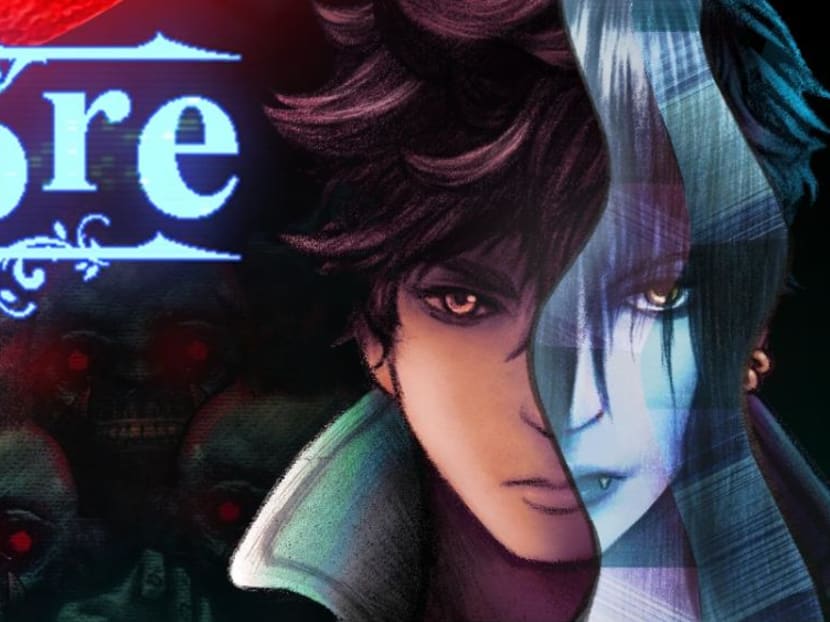Eat satay, fight pontianaks: Made-in-S'pore ghost-hunting game rakes in more than S$250,000 in a week
SINGAPORE — Having spent months hacking away at pixelated demons on his computer screen in his teenage years, Mr Andrew Teo dreamt of making his own game inspired by Diablo 2.

Screenshot from the game Ghostlore, where players battle supernatural spirits from Southeast Asian folklore to protect the city of Seaport.
- Having spent countless hours playing action role-playing game Diablo 2 as a teen, Mr Andrew Teo always wanted to create his own game in the same style
- With one other developer, he created Ghostlore, a ghost-hunting game where players defend the island of Seaport from ghosts and spirits like pontianak and jiangshi
- The game has generated more than S$250,000 in sales in the first week since launch
- Mr Andrew Teo tells TODAY about his journey creating Ghostlore and his future plans
SINGAPORE — Having spent months hacking away at pixelated demons on his computer screen in his teenage years, Mr Andrew Teo dreamt of making his own game inspired by Diablo 2.
So the 35-year-old freelance game developer spent almost five years of his free time after work to create a supernatural-themed game.
Those sleepless nights coding, creating his characters and designing the graphics paid off — just a week after its official launch on May 17, his game called Ghostlore has generated more than S$500,000 in sales accumulatively, with half of it from the first week alone.
The game is projected to earn S$1 million in sales by the end of 2023.
“When I was making the game, I was just hoping it would break even at maybe a few thousand. So the response has been amazing,” Mr Teo told TODAY.
Ghostlore turns gamers into ghost hunters, fighting against supernatural spirits from Southeast Asian folklore in teams of up to four.
Hack away at a banana tree where the malay ghost pontianak resides, or try to survive a jiangshi, a Chinese hopping vampire — all this to protect the town of Seaport.
Paying homage to Singapore, the island of Seaport features a merlion in a city square surrounded by shophouses.
Players also eat local delights like satay and chicken rice to regain their health and strength, which makes fighting off spirits a tad easier.
Since its launch, Mr Teo told TODAY that more than 30,000 people have bought the game on the Steam platform, and 120,000 have played it on game subscription platform Xbox Game Pass.
CHILDHOOD, REDDIT AND GHOSTS
Mr Teo admits that he is not a very sociable person. As a child, he would rather play games on his computer than hang out with friends.
Video games of the 1990s and 2000s, such as Diablo 2, Kingdom Hearts and the Final Fantasy series, would take up hours of his time.
It’s these games that inspired Ghostlore, the first he has released on his own. The pixelated art and isometric graphics used in the game are a homage to his childhood, he said.
“I created the rough mechanics of the game around 2018 and 2019, but it was quite barebones then,” said Mr Teo, adding that it was to test if the game mechanics would work.
“Some of my friends were the testers to make sure (the game) worked, and I also asked them what kind of characters they should be fighting,” he said.
That was when some brought up local folklore — something that had yet to be done here.
While he may have the gaming experience to shape Ghostlore, Mr Teo still had his work cut out for him. For one thing, he is not a religious or spiritual person.
“I had to do a lot of research to make this game… since I was designing the graphics, I was also careful not to depict these spirits in a disrespectful way,” he said.
Stuck at home when the nation was in partial lockdown during the Covid-19 pandemic in 2020, Mr Teo spent more time into building his game. That was when he struck internet fame — a post he made about the game’s development on subreddit r/Singapore garnered more than 2,000 upvotes and 400 comments.
“I just wanted to share because I thought people would find it interesting… I didn’t expect it to become popular and that many would want to follow (the development) of the game,” Mr Teo admitted.
Redditors also made suggestions — such as having local cuisine featured in the game — and their usernames are featured in the end credits of the game.
It was also in 2020 that he met programmer Adam Teo, who helped programme the game and made sure the mechanics were balanced — ensuring players would not struggle too much during certain battles, or have it too easy — while he worked on the illustrations.
The two Teos are not related.
Despite the workload and numerous offers from others to help develop the game, the duo kept the work to just themselves.
“We didn’t know whether the game would be successful, and we have to keep our costs low,” Mr Teo said.
Having been largely self-funded — sans a US$30,000 (S$40,200) fund from Microsoft to translate the game into multiple languages — and finally having his game available for the world to play, Mr Teo said release day was nerve-wracking.
“Adam was definitely more optimistic,” he admitted.
“But a lot of things could go wrong, like maybe there’s a serious bug... I was extremely nervous.”
He was relieved as things went well during the launch. To celebrate, Mr Teo treated himself to the one thing he needed most: Sleep.
POPULARITY AND FUTURE
The game might be inspired by folklore in the region, but most players are from the United States and China — something that Mr Teo finds puzzling.
“For the US, it makes sense because Steam is a US-based platform. But for China, I’m not too sure,” he said, adding that his poor Mandarin skills make it difficult to understand some social media posts and reviews about Ghostlore.
One reason for the popularity is the positive reviews for the game. But it has been largely fuelled by word-of-mouth.
“I’m proud of the fact people are sharing about the game with their friends. It shows they’re enjoying it,” he said.
What’s next? Since launching the game, Mr Teo has received offers to work on other games.
But the work for Ghostlore has not ended yet. Besides fixing the game’s Spanish translations, he and Mr Adam Teo are exploring making the game available on different consoles.
“Maybe content updates for the game? But I’m just very tired and have yet to discuss this with Adam. I need to find the energy to do so,” he said.
And when that is done, Mr Teo hopes to put the supernatural behind and start work on a new game.
“I think I'll go with sci-fi next, since I like that,” he said.
WHAT OTHERS SAY
Successful local game releases like Ghostlore raise the morale of other indie game developers, said Mr Shawn Toh, the chief executive officer and game designer at local indie game development firm BattleBrew Productions.
"Every successful game from Singapore raises the island's creator profile as a whole," the 38-year-old said.
"I think there's actually a lot of promising young developers and artists, even if not all take up a full-time career in game development. Indie games are still very much a cottage industry with some breakout hits here and there."
As he knows Mr Andrew Teo personally, Mr Toh is well aware of the logistical struggles and stresses faced during the development of Ghostlore.
"He's definitely worked very hard for this. I'm glad for his success and hope more indies find success, too."
How Ghostlore allows gamers to customise characters is what attracted Mr Liaw Xiao Tao, a 24-year-old student and avid gamer.
“The game looks great, the swarm-like monster mechanics add a sense of danger and make you feel like you could be overwhelmed by monsters anytime. Ghostlore’s glyph and power customisation systems seem to allow a high level of player autonomy and creativity.”
Mr Liaw said it’s rare to see designs incorporating Singaporean influences in games.
“The design of the monsters, as well as certain buildings and areas, makes the game feel incredibly thematic," he said.
“Both the mechanics and design of Ghostlore make it worth the buy. Knowing that I’ll be supporting Singaporean game developers is simply an added bonus.”
Clarification: The headline and article have been amended, after Mr Andrew Teo clarified that the game generated around S$250,000 in revenue in the first week of the game's release. The previously cited figure of S$500,000 included pre-launch sales.















